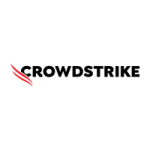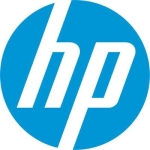What is our primary use case?
I'm a security coach with multiple clients. I provide security implementation, planning, and maintenance through Microsoft Defender. I use all the Defender products, including Defender for Identity, Defender for Office 365, and Defender for Cloud.
It's easy to integrate the solutions. You only need to go into the settings and switch on the connectivity to all the Defender for Endpoint connectivity telemetry. Microsoft documentation is thorough, and it walks you through all the necessary steps.
We're multi-client and multi-cloud. We're working with multiple organizations and departments, so it's complex. We have domains and sub-domains that we must account for on the deployment side. We also use Defender for ATP, which is the Defender for domain controllers.
How has it helped my organization?
Defender for Endpoint helped to bridge the gap with remote workforce solutions because it protects managed and unmanaged devices. It's also easier to use because Defender for Endpoint is cloud-managed, so it stays maintained and updated. It has a leg up on competing solutions that require more system resources and maintenance.
The tight integration with Microsoft operating systems is another advantage because it's easier to manage. It also goes beyond Windows OS. Defender for Endpoint supports other platforms and operating systems, such as Linux, iOS, and Android. I like that Microsoft is expanding the product's scope beyond Microsoft operating systems. Microsoft is developing a holistic approach, so you don't need a third-party product to protect these other non-Microsoft platforms.
Defender helps us to prioritize threats across the enterprise. The weighted priorities are based on all the MITRE security standards. Defender products work together to provide comprehensive protection. I agree with the placement of Defender Products on Gartner's Magic Quadrant. Defender is a leader in that area of threat protection. I'm pleased with the outcome of a lot of the investigations. I can protect and harden areas that didn't usually didn't have that level of visibility and granularity.
Defender integrates with Sentinel, enabling me to ingest data from my entire ecosystem. Sentinel also covers non-Microsoft products with the third-party connectors that are provided. I enjoy that part of the Sentinel functionality and feature set. It has several features for aggregating the log data and analytics for the on-premises environment. Having that visibility is crucial.
Sentinel provides the SIEM and the SOAR capabilities, offering a single pane of glass for all of the security operations centers and providing on-site reliability for many of my clients. Sentinel is Microsoft's answer to competing tools such as Splunk and other log application tools. Sentinel seems to provide more added value from the ease of use and visibility. The licensing is also competitive.
You can set up Sentinel to forward alerts if you want to create a managed Cloud environment solution for Sentinel for a client. There's a way to set that up through Azure Front Door. You're seeing the data reporting and single pane of glass for other tenants and customers. It enables you to offer security as a service to maintain visibility for clients.
I like that it considers the status of a device (whether the device is online or offline, VPN or not, etc.) and provides several options for telemetry, depending on where and how the device is being used. It gives a lot of flexibility with the installations, maintenance, and management of the Endpoint solution. In addition to Defender for Endpoint's feature set, other parts of device management reduce the attack surface and protect those devices.
Defender's automation features have been a significant advantage with many of my clients because the remediation has been automated. Most of the time, it doesn't require any human intervention unless there's something that hasn't been set up. I must demonstrate the automated investigation and remediation to my clients to ensure their environment is automatically protected on weekends and after business hours.
The single pane of glass is vital to us as security consultants and our clients, who need a high level of visibility. You can go into the high-level executive dashboard view and drill into each telemetry graphic to provide you with more granular data. I see how easy it is to see the big picture and effortlessly drill into the details using the side navigation menus and more.
Consolidating things into one dashboard streamlined them significantly. When working with multiple tools and vendors, you typically have to stitch the reporting together to get an overarching view of everything. It's time-consuming. By the time some of these tasks are accomplished, the data starts to get stale, so you need to refresh and create an all-new view again. Having real-time capability in a single pane of glass is essential.
Defender Threat Intelligence helps us develop a forward-looking approach to threats and plans. That's one aspect of the product I find incredibly helpful. It will highlight things that may require intervention, such as turning on conditional access rules or setting up some geofencing for anything that looks like it could be a password spray attack from a known location that we can block.
There are opportunities to turn off any legacy protocols that may be in use. That's been a common thread with some of my clients who still use legacy protocols for sign-in and authorizations. The ability to do that has been a considerable help proactively.
You don't know what you don't know until you know. The continual flow of real-time data and analytics from Defender products helps create a security roadmap and harden many areas. With improved visibility, we can build a better roadmap to harden those areas by prioritizing and doing things methodically. Previously, we were guessing what to do next or what would be most important based on an educated guess. Now, we have data to guide our security decisions.
Microsoft Defender has saved us hours and hours. It has probably paid for itself many times over. I would agree that it has saved a lot of time and money. I estimate it probably saved us the equivalent of two people working full-time. You typically have at least one person overseeing on-premise resources and another dedicated to cloud resources.
What is most valuable?
In my opinion, the most valuable aspects are the reporting analytics and integration with Sentinel. Defender does an excellent job of correlating the different entities that comprise threat analysis, analytics data, and log analytics. It helps to piece together investigations into any exploit or malicious activity within a specific tenant. AI and analytics tools are probably the most valuable components.
The bidirectional sync capabilities and off-app sanctioning of the SaaS applications are helpful. The identity security posture feature set provides investigation recommendations for risky users. The heat map for locations is also handy. Defender integrates with the AIP DLP for data governance and protection. I use all of that.
There's a need to have augmented workforce capability. You need to see the data streams for client work augmentation for the security operation center and act on the information. Having data in near real-time is essential to my organization and the work we do for our clients. The built-in SOAR, UEBA, and threat detection features are comprehensive.
What needs improvement?
It always helps to have onboarding wizards. Microsoft has done a lot of work in that area. I would like to see some more refinement in the wizards to allow more diverse use cases and scenarios that help us deploy Defender globally. In particular, I would like to see more deployments considering localization barriers and networks or devices common in various regions.
Localization is always a challenge, especially with new products you typically want. Solutions are designed to be deployed where the most licenses are being consumed, such as in the United States. They focus on US products, devices, and networks. Specialized deployments for other countries would allow for a smoother experience in transition.
For how long have I used the solution?
I have been using Microsoft Defender for about two and a half years.
What do I think about the stability of the solution?
It's pretty stable. I haven't had any reliability concerns with Defender, and there have not been too many complaints from users that have to have extensive reboots or any kind of performance impact. So I would say it's pretty stable.
What do I think about the scalability of the solution?
Scalability is built into the product. It's a cloud-managed solution, so it's capable of scaling pretty quickly as needed. You don't have to unlock another key or do something else to scale the product. It's scalable by design.
How are customer service and support?
I rate Microsoft support a seven out of ten. We've opened a few Microsoft tickets. For example, we've seen some discrepancies between Defender for Exchange Online and the reporting from Sentinel. We raised tickets to determine why Sentinel's logging data doesn't match what we see in Exchange Online.
It can be slow and tedious sometimes. Microsoft has different support level agreements. If you want prompter and higher-quality support, you typically need to pay for an Ultimate Support contract. If we compare that with other companies or organizations, Microsoft is probably on par with everyone else. You don't get a higher level of support unless you pay for it.
How would you rate customer service and support?
Which solution did I use previously and why did I switch?
I've worked with all the major antivirus and endpoint protection vendors, including Splunk, CrowdStrike, Sophos, Norton, and McAfee. Microsoft's advantage is its integration with the operating system, ease of deployment, and support for the 365 Cloud experience. It makes everything easier to deploy, maintain and manage. It comes down to cost and integration. We realize cost savings because it's integrated into the E5 licensing product.
How was the initial setup?
The setup is straightforward and mostly automated. You only have to intervene when you experience errors. Those typically happen on non-US systems or in other countries. For the most part, it's effortless to deploy.
We try to use the auto-onboarding capabilities that come with Autopilot. If you have new systems deployed with Windows Autopilot onboarding capability, that's going to turn Defender on with the proper policies and security parameters.
One person is enough to deploy Defender if you have a plan and proper communication. You notify everyone that the deployment is happening and push the button. You need to let everyone know if reboots are required and the like. Other than that, it's pretty much a one-person deployment job.
In terms of maintenance, Defender is probably somewhere in the middle. Microsoft maintains a lot of automated updates. There are feature sets that come into play with things that are put in preview and you may want to see if it's something you want to turn on and try out while it's in preview. Those are the only areas that require some discussion and intervention. Most of the maintenance is automated. At the same time, you also need to be trained and aware of the updates and feature sets as they mature. You must stay on top of changes to the UI, reporting, etc.
What was our ROI?
If you look at what we pay on average and all the potential ransomware and malware threats we've averted, we've definitely saved tens of thousands of dollars, depending on the client. Some of the bigger clients have saved millions of dollars of potential ransomware payouts because Defender products helped protect those areas of attack.
What's my experience with pricing, setup cost, and licensing?
The cost is competitive and reasonable because most of the expense is log analytics, storage, and data consumption and ingestion. They can be throttled and controlled, so they are highly flexible. Defender has a lot of advantages over competing products.
From a licensing aspect, you're not just getting a security product. You're getting a lot of other capabilities that go beyond the Defender products. You get an E5 or E3 license and some form of Defender for Endpoint included with all the other security features of the other Defender products.
Which other solutions did I evaluate?
It didn't take too long to decide on Microsoft because of the integration and simplicity. CrowdStrike is probably the closest competitor.
What other advice do I have?
I rate Microsoft Defender for Endpoint a nine out of ten. Defender is one of the best I've seen, and I'm not saying that as a Microsoft reseller. We use Defender and have gotten our Microsoft certifications to provide a high level of service for our clients. It's crucial to have a product we stand behind and believe in wholeheartedly. We're not getting kickbacks from Microsoft for saying or doing any of that. We use it because it works.
I would say there's a trade-off. Once you start adding complexity to security, you're going against best practices that say simpler is better. Adding another vendor or a level of complexity is usually unnecessary. Unless there's something Microsoft completely missed, I would question the value of going to another vendor.
Communication and planning are most important. Any time you change products or deploy something for the first time, you should test it first in a smaller use-case scenario. That will help you identify any issues with your network, firewall, or legacy applications that may be falsely identified as a threat. It's always best to test your use case scenarios in a proof of concept before you deploy it.
Which deployment model are you using for this solution?
Hybrid Cloud
Disclosure: My company has a business relationship with this vendor other than being a customer. Partner















